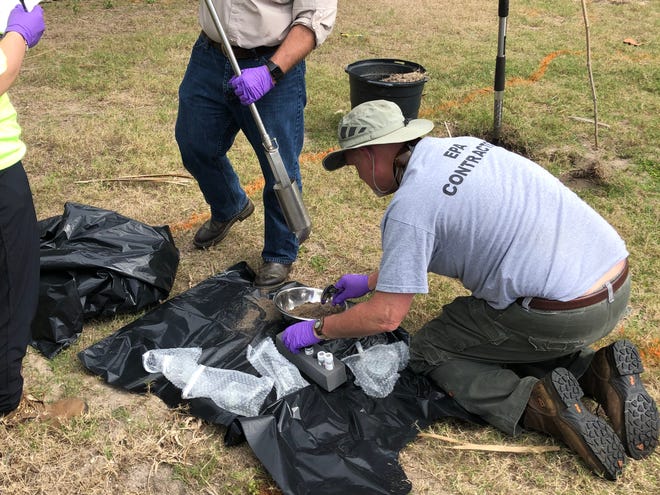Florida
Contaminated bases endanger vulnerable minority communities | Opinion

Over the last century, the U.S. army’s use, storage, and inattentive disposal of toxic substances have been the source of enduring environmental hazards. For decades, countless service members, dependents, and civilians who worked and lived on contaminated military bases were exposed to toxins known to cause debilitating health conditions.
While the army’s negligent practices primarily impact veterans and military families, it also contributes to a prevalent form of environmental discrimination burdening disenfranchised minority groups. In Florida, “forever chemicals” leaching from affected bases pose a genuine threat to surrounding Black and Hispanic communities.
Camp Lejeune in North Carolina is perhaps the most representative case of extensive contamination in the U.S. military. From 1953 to 1987, close to 1 million of the base’s residents were exposed to toxins exceeding adequate safety levels by 240 – 3,400 times. Among the deadly hazards uncovered on Camp Lejeune’s premises are notorious carcinogens like benzene, vinyl chloride, perchloroethylene, trichloroethylene, halogenated hydrocarbons, and per- or polyfluoroalkyl substances (PFAS).
PFAS are a group of synthetic carbon-fluoride compounds commonly known as “forever chemicals” due to their strong molecular structures that prevent natural decomposition. Since the 1970s, the US military has relied on PFAS-based aqueous film-forming foam to extinguish difficult jet fuel blazes on its bases or in firefighting training exercises.
More:Feds suspect how dumpsite toxins enter Space Coast beachside homes: vapor intrusion
‘Forever chemicals’ lurk everywhere Florida looks for them in the Indian River Lagoon
Despite their qualities, PFAS represent a distinct environmental threat ― since they don’t naturally decay, they can penetrate the soil with ease and reach underground drinking water sources. Prolonged exposure to these compounds leads to their bioaccumulation and has been clinically associated with kidney and testicular cancer, liver dysfunction, elevated cholesterol, pregnancy-related issues, lower birth weight, and decreased vaccine efficiency in children.
While Camp Lejeune’s status as a military Superfund site since 1989 has allowed it to remain operational thanks to continuous remediation efforts, more than 700 bases across the U.S. are dealing with PFAS contamination on their grounds to varying extents. Moreover, a recent study found that close to 3,500 active and inactive military installations around the country are presumed to be affected, mainly as a consequence of aqueous film-forming foam use.

Throughout the early-to-mid 1900s, discriminatory redlining policies significantly undervalued land in minority neighborhoods, which became cheap prospects for situating army bases, factories, traffic ways, landfills, and other pollution hotspots at the expense of residents’ health. The higher toxic burden that minorities endure due to a legacy of systemic prejudice is also known as environmental racism.
While industrial pollution and institutional neglect have been at the root of events like the Flint Water Crisis, PFAS originating from contaminated military bases also represent a genuine environmental hazard for surrounding minority communities. In 2016, the EPA elaborated unenforceable health advisories of 70 parts per trillion (ppt) for PFOA and PFOS, the most commonly-used PFAS compounds in the foam.
Florida hosts over 20 bases where PFAS contamination has been confirmed or is justifiably suspected, with the most affected locations including Patrick Space Force Base (4,338,000 ppt), Naval Air Station Jacksonville (1,397,120 ppt), Tyndall Air Force Base (902,460 ppt), NAS Cecil Field (988,600 ppt), Eglin AFB (552,200 ppt), and MacDill AFB (523,710 ppt). Other installations with significant PFAS contamination throughout the state include Cape Canaveral, the Air National Guard Base at Jacksonville International Airport, Whiting Field, Pensacola, Hurlburt Field, Avon Park, Homestead, and Corry Station.

Notably, high PFAS levels have been reported in the drinking water of communities surrounding Homestead Air Reserve Base, Hurlburt Field, and Avon Park, with similar issues occurring near NAS Pensacola and Whiting Field. Meanwhile, the use of aqueous film-forming foam at Cape Canaveral and Patrick SFB is associated with higher PFAS counts in surrounding waterways, sea life, and vegetation. Although several locations mentioned above have been listed as Superfund sites, not all have been afforded the same status, making PFAS remediation projects more challenging to undertake.
The neighborhoods near Patrick Space Force Base are predominantly white working middle class.
But, in the US, race and ethnicity are inextricably linked to elevated toxic exposure and environmental risks. Black and Hispanic Americans inhale 56% and 63% more airborne hazards than they produce and are more likely to live closer to contaminated locations, with individuals in Florida also facing higher covid mortality rates. Additionally, the more pronounced climate change-related risks, ranging from stronger and more frequent hurricanes to rising sea levels, increase the likelihood of flooding and toxic runoff in areas of Florida that host contaminated army bases and Superfund sites.

Combating environmental racism’s lasting effects requires the involvement of state and federal institutions to create a legal framework that ensures lasting reforms and keeps polluters accountable for their actions. Toward this end, measures such as Florida AG’s lawsuit against over a dozen PFAS manufacturers seeking an undisclosed amount for evaluating and cleaning up contamination lend a modicum of hope for exposed minority communities that often don’t have the resources to confront financially-potent polluters head-on.
Several developments over the past few years also provide promising prospects in addressing the country’s long standing issues with environmental toxins. Through the National Defense Authorization Act, aqueous film-forming foam will be phased out of the military by 2024, and vital PFAS cleanup projects will be financed on the most affected bases in the country. Concurrently, federal programs like Justice40 and the Bipartisan Infrastructure Law aim to provide vital funding for minority communities to address lasting environmental hazards.
More:EPA tightens recommendations on ‘forever chemicals’ in drinking water
In 2022, Florida’s Senate passed House Bill 1475, which instructs state regulators to enact statewide PFAS cleanup targets only if national standards aren’t set by 2025. However, that may soon change as the EPA seeks to establish federal standards for PFAS in drinking water by the fall of this year. In June 2022, the Agency updated its health advisories for PFOA and PFOS to reflect the dangers they represent even in minimal concentrations, significantly reducing what it deems safe from 70 ppt to a mere 0.004 ppt and 0.02 ppt.
Jonathan Sharp serves as CFO at Environmental Litigation Group PC, a law firm based in Birmingham, Alabama, that specializes in toxic exposure.

-

 States2 weeks ago
States2 weeks agoPearlie Golden 93-Year-Old Black Woman Shot By Texas Cop
-

 States2 weeks ago
States2 weeks agoLayers Of Racial Tension The Mario Woods Tragedy And San Francisco Path To Justice
-

 States2 weeks ago
States2 weeks agoTragedy Unveils Racial Tensions Tarika Wilson Story
-

 States2 weeks ago
States2 weeks agoLynching Of Thomas Shipp Tragedy Of Racism Echoes Through History
-

 States2 weeks ago
States2 weeks agoThe Killing Of Terence Crutcher And The Fight For Racial Justice

















You must be logged in to post a comment Login